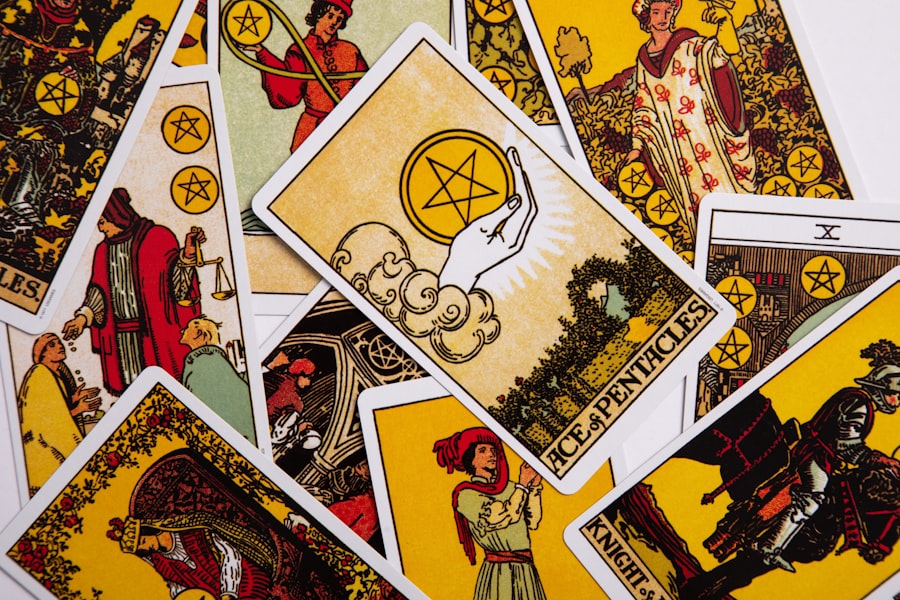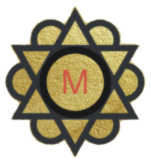
The Tarot deck is a powerful tool for divination, self-reflection, and spiritual guidance. Traditionally, a Tarot deck consists of 78 cards, divided into two main sections: the Major Arcana and the Minor Arcana. The Major Arcana comprises 22 cards that represent significant life events, spiritual lessons, and archetypal themes.
Each card in this section, from The Fool to The World, carries profound symbolism and meaning, often reflecting pivotal moments in one’s journey. For instance, The Tower signifies upheaval and transformation, while The Empress embodies fertility and abundance. These cards serve as a mirror to the soul, inviting introspection and deeper understanding of one’s life path.
The Minor Arcana consists of 56 cards divided into four suits: Cups, Pentacles, Swords, and Wands. Each suit corresponds to different aspects of human experience. Cups relate to emotions and relationships, Pentacles deal with material aspects and finances, Swords represent thoughts and conflicts, while Wands symbolize creativity and action.
Within each suit, cards are numbered from Ace to Ten, along with four court cards: Page, Knight, Queen, and King. This structure allows for a nuanced exploration of everyday situations and challenges. For example, the Five of Cups may indicate feelings of loss or regret, while the Ace of Wands can signify new beginnings and inspiration.
Understanding these cards and their meanings is essential for effective Tarot reading.
Key Takeaways
- The Tarot deck consists of 78 cards divided into major and minor arcana, each with its own symbolism and meaning.
- Creating a sacred space for a tarot reading can help to set the right atmosphere and energy for the session.
- Setting clear intentions for the reading can help to focus the energy and guide the interpretation of the cards.
- Cleansing and clearing the energy of the space and the deck can help to remove any negative or stagnant energy that may interfere with the reading.
- Choosing the right spread, or layout of the cards, can help to address specific questions or areas of focus in the reading.
- Grounding and centering yourself before a tarot reading can help to connect with your intuition and create a clear channel for receiving guidance from the cards.
Creating a Sacred Space
Creating a sacred space is an integral part of the Tarot reading process. This environment serves as a sanctuary where one can connect with their intuition and the energies surrounding them. To establish this space, it is essential to choose a quiet location free from distractions.
This could be a dedicated room or a cozy corner in your home adorned with items that resonate with you spiritually. Incorporating elements such as candles, crystals, or incense can enhance the ambiance and promote a sense of tranquility. For instance, lighting a white candle can symbolize purity and clarity, while burning sage can help cleanse the area of negative energies.
In addition to physical elements, the emotional atmosphere of your sacred space is equally important. Taking a moment to breathe deeply and center yourself can help create a calm mindset conducive to intuitive work. You might consider playing soft music or nature sounds to further enhance the environment.
Some practitioners also find it beneficial to incorporate personal items that hold significance, such as photographs or talismans that inspire positive energy. By intentionally crafting this sacred space, you set the stage for a more profound connection with the Tarot and your inner self.
Setting Intentions for the Reading

Setting intentions is a crucial step in preparing for a Tarot reading. Intentions act as guiding principles that shape the focus of your inquiry and help clarify what you hope to achieve through the reading. Before shuffling the cards, take a moment to reflect on your current situation or question.
This could range from seeking guidance on a specific relationship to exploring career opportunities or personal growth. By articulating your intention clearly—whether silently or aloud—you create a framework for the reading that aligns with your desires. For example, if you are seeking clarity on a challenging decision, you might set an intention such as, “I seek guidance on how to navigate this situation with wisdom and confidence.” This intention not only directs your energy but also invites the cards to provide insights relevant to your query.
It is essential to approach this process with an open mind and heart, allowing for unexpected revelations that may arise during the reading. By establishing clear intentions, you enhance your ability to interpret the messages from the Tarot in a meaningful way.
Cleansing and Clearing the Energy
Cleansing and clearing the energy surrounding your Tarot deck and reading space is vital for ensuring accurate interpretations and insights. Over time, decks can absorb energies from previous readings or environments, which may cloud their messages. There are various methods for cleansing your Tarot cards; one popular technique involves using smoke from sage or palo santo.
As you pass each card through the smoke, visualize any stagnant or negative energy dissipating, leaving the cards refreshed and ready for use. Another effective method is to use sound vibrations to clear energy. This can be achieved by ringing a bell or using singing bowls near your Tarot deck.
The sound waves help break up any dense energy surrounding the cards, creating a clean slate for your reading. Additionally, some practitioners prefer to place their decks under moonlight or sunlight for several hours as a natural way to recharge and cleanse them energetically. Whichever method you choose, taking the time to cleanse your Tarot deck fosters a more authentic connection during readings.
Choosing the Right Spread
Selecting an appropriate spread is essential for guiding your Tarot reading effectively. A spread refers to the layout in which the cards are placed during a reading, with each position representing different aspects of your inquiry. There are numerous spreads available, ranging from simple three-card layouts to more complex arrangements like the Celtic Cross.
The choice of spread should align with your intention and the depth of insight you seek. For instance, if you are looking for quick guidance on a specific question, a three-card spread may suffice; each card can represent the past, present, and future related to your query. Conversely, if you desire a more comprehensive analysis of a situation, the Celtic Cross spread offers ten positions that delve into various dimensions such as obstacles, influences, and potential outcomes.
It’s important to familiarize yourself with different spreads and their meanings so that you can select one that resonates with your current needs. By thoughtfully choosing a spread that complements your intention, you enhance the clarity and relevance of the messages received from the Tarot.
Grounding and Centering Yourself

Grounding Techniques for Clarity
effective grounding technique is visualization; imagine roots extending from your feet into the Earth, anchoring you firmly while drawing up nourishing energy from below. This practice not only helps dispel anxiety but also enhances your receptivity to intuitive insights during the reading. Additionally, engaging in deep breathing exercises can aid in centering yourself; inhale deeply through your nose, hold for a moment, then exhale slowly through your mouth. This rhythmic breathing calms the mind and prepares you for focused contemplation.
Physical Movement for Balance
Another method involves physical movement; taking a short walk in nature or practicing yoga can help release any pent-up energy while fostering a sense of connection with your surroundings. By incorporating grounding techniques into your pre-reading ritual, you create an optimal mental and emotional state that allows for deeper engagement with the Tarot’s wisdom.
Preparation for a Deeper Connection
In summary, understanding the Tarot deck’s structure and symbolism lays the foundation for effective readings. Creating a sacred space enhances focus and connection while setting clear intentions directs the energy of the reading toward specific inquiries. Cleansing the deck ensures clarity in messages received, while choosing an appropriate spread aligns with one’s goals for insight.
If you are interested in delving deeper into the mystical world of tarot card readings, you may also want to explore the significance of numerology in this practice. Numerology plays a crucial role in interpreting the cards and understanding their messages. Check out this insightful article on Numerology for Number 5 to learn more about how numbers can enhance your tarot card rituals and readings.
For more information on the mystical meanings of numbers, be sure to read The Mystical Meaning of Number 7.
FAQs
What are tarot card rituals?
Tarot card rituals are a set of practices and preparations that are performed before a tarot card reading. These rituals are believed to help the reader and the querent (the person receiving the reading) to focus their energy and intentions, and to create a sacred and respectful space for the reading.
Why is it important to prepare for a tarot card reading?
Preparing for a tarot card reading is important because it helps the reader and the querent to center themselves, focus their energy, and set the intention for the reading. It also creates a respectful and sacred space for the reading to take place, which can enhance the overall experience and the accuracy of the reading.
What are some common tarot card rituals?
Common tarot card rituals include cleansing and consecrating the tarot cards, setting the intention for the reading, creating a sacred space, and grounding and centering the energy of the reader and the querent. These rituals can involve practices such as meditation, smudging with sage or other cleansing herbs, and setting up an altar with candles and crystals.
How can I prepare for a tarot card reading?
To prepare for a tarot card reading, you can start by cleansing and consecrating your tarot cards, setting a clear intention for the reading, and creating a sacred and respectful space for the reading to take place. You can also ground and center your energy through meditation or other grounding practices.
Are tarot card rituals necessary for a reading?
While tarot card rituals are not strictly necessary for a reading, many practitioners believe that they can enhance the overall experience and the accuracy of the reading. These rituals can help the reader and the querent to focus their energy and intentions, and to create a sacred and respectful space for the reading to take place.






